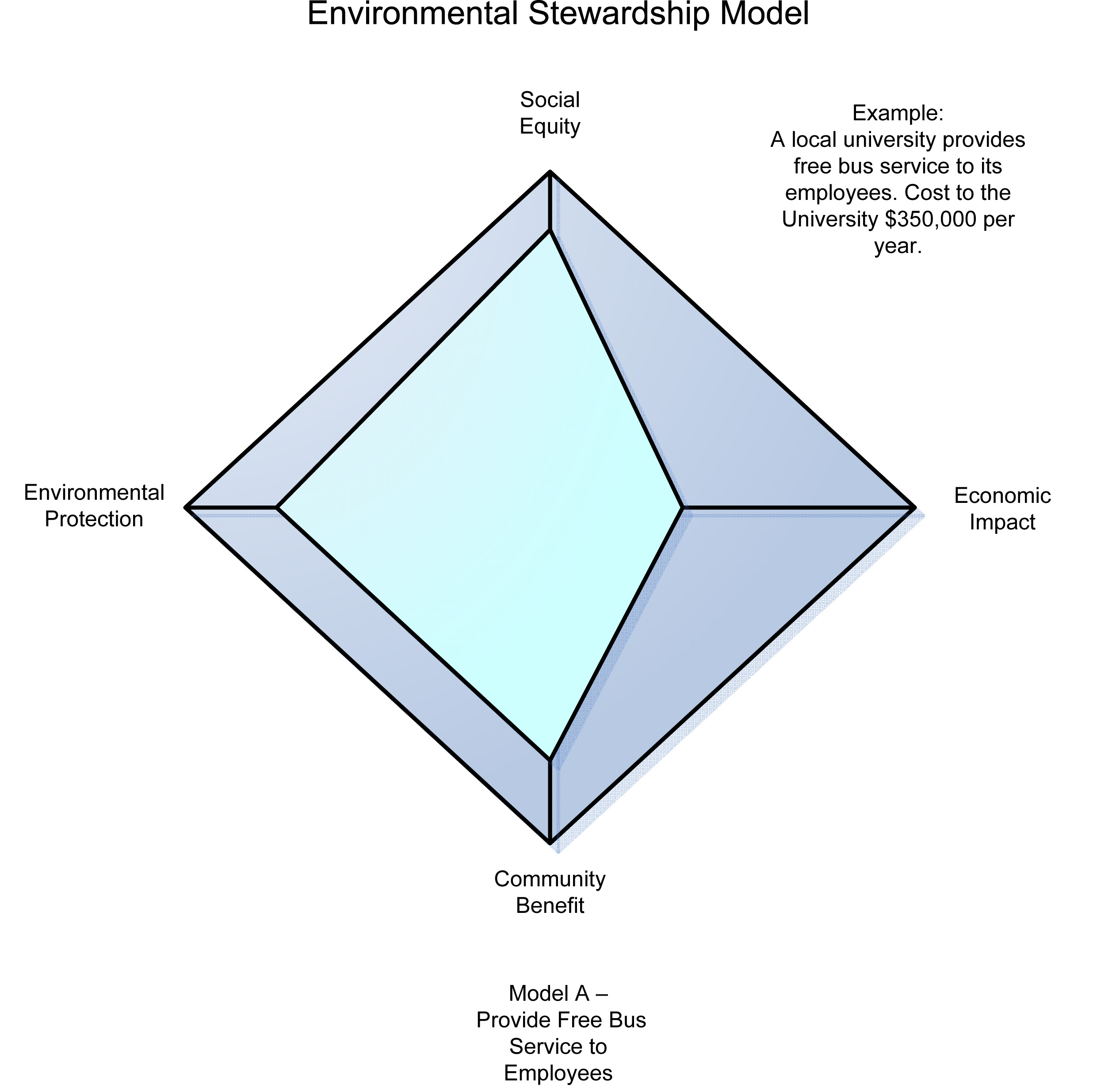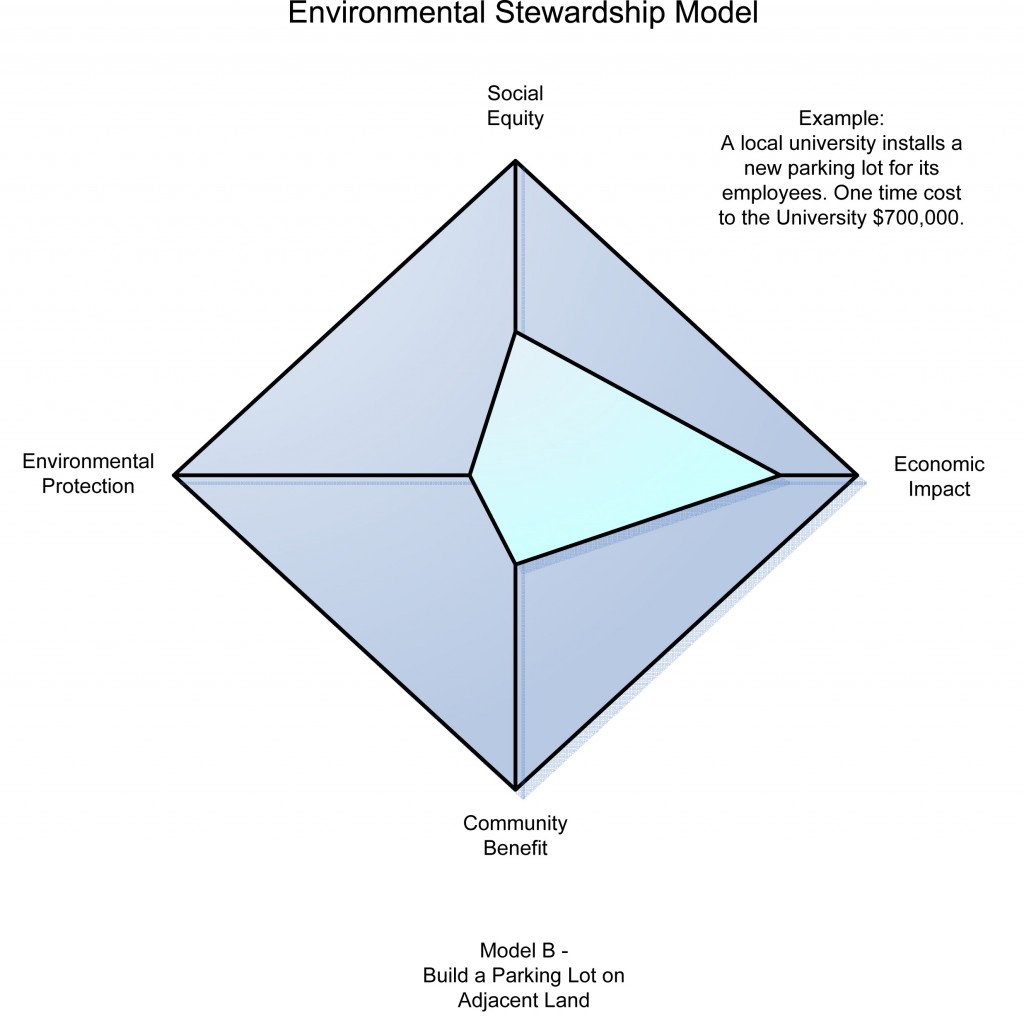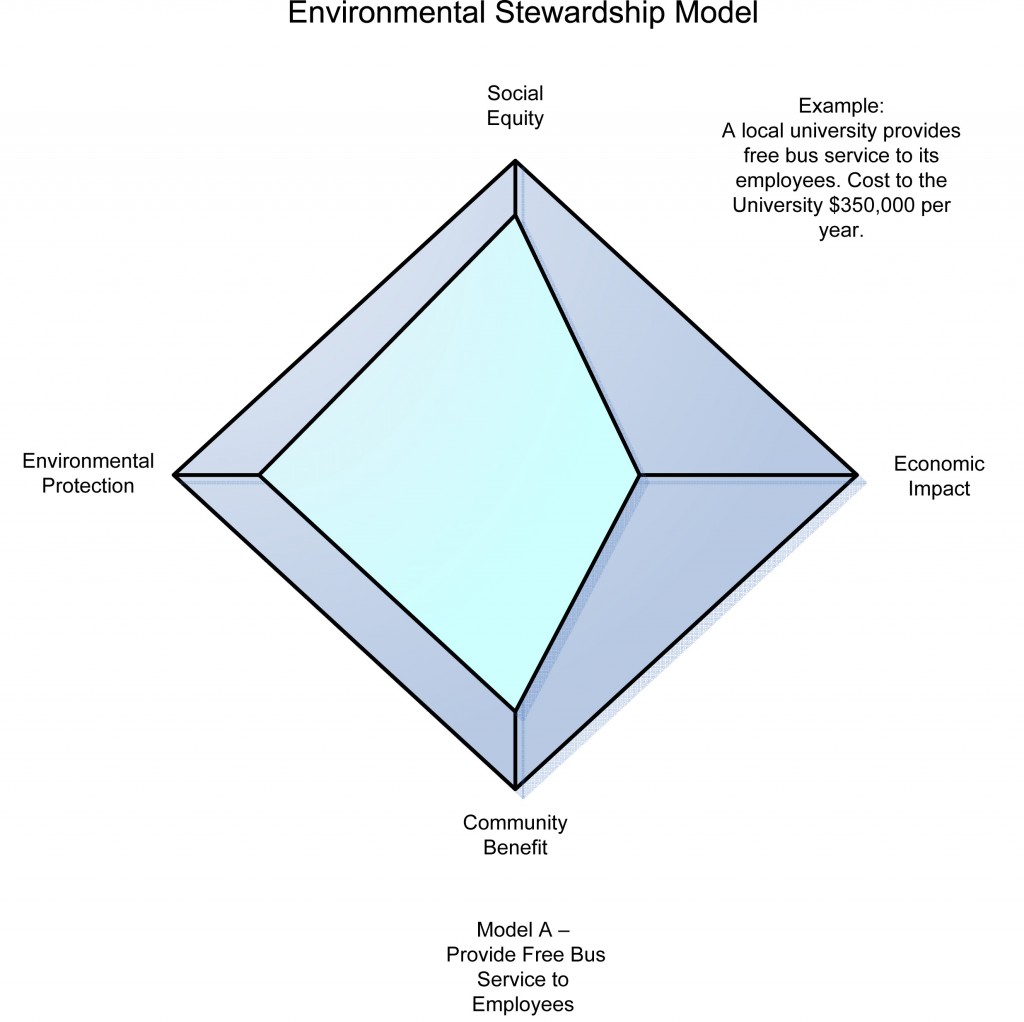Often people ask, what is sustainability? How do we determine what is the right path towards sustainability? I would like to propose a method of evaluating environmental stewardship, that when used shall take into account the different aspects of sustainability and will help those using the model to make informed decisions.
There are four prongs to environmental stewardship: social equity, community benefit, economic impact, and environmental protection. Social equity takes into account the benefit of the person, their well-being and a goal for equity for all. Community benefit is measured as a benefit to the community and may refer to any type of community: town, village, county, group, association, etc. Economic impact is the impact that occurs positively or negatively to the bottom line of the company, corporation, non-profit or other group. Environmental protection is the positive or negative impact on the environment and should consider resources, re-use, pollution, destruction or saving habitat and other environmental concerns.
As a decision maker for your corporation, you may choose to consider Environmental Stewardship as one of the criteria for your evaluation. How do you evaluate your options? I suggest you use the model below. You will develop an environmental stewardship model for each of your options. In this example, a university is lacking in parking spaces and needs to find more open spaces. They have narrowed their choices to two options: (1) provide free bus service to its employees and (2) to build a parking lot on adjacent land.
The Environmental Stewardship Model is created by characterizing the four attributes in a graph (shown in Model A and B). Each characteristic is ranked from 1-10, where 1 is in the middle and has no benefit to the characteristic and 10 is at the exterior and is the perfect outcome for that characteristic.
In Model A – Provide Free Bus Service:
Social Equity is given a 9 – it will be offered to all employees, although many will choose not to utilize this benefit.
Economic Impact is given a 3.5 – the cost to the university will be $350,000 per year.
Community Benefit is ranked 8 – employees will be able to use the bus pass for recreational, educational, cultural and shopping outings that will provide benefit to the community through economic and cultural impact.
Environmental Impact is rated a 8 – it is anticipated that the program will reduce the number of trips to and from the university by over 50,000. This reduces demand for fuel and pollution.
In Model B – Build a Parking Lot on Adjacent Land:
Social Equity is given a 4 – the parking spaces will only be offered to new employees.
Economic Impact is given a 8 – the cost to the university will be $700,000, a onetime expenditure.
Community Benefit is ranked 3 – the parking lot will be available for use by community organizations such as for charitable events.
Environmental Impact is rated a 1.5 – it is anticipated that the program will have a negative impact on the environment, increased trips to the University, increasing demand for fuel and pollution.
By evaluating the area of the two charts, you can see that Model A Free Bus Service offers the best option for environmental stewardship. The larger the area of the graph represents a more sustainable option. The Stewardship Model has the benefit of taking into account all factors of sustainable options. In this case, the university would do best to select the option of providing bus passes to its employees. Clearly, the impact on the environment is positive; it will provide community benefit and is an equitable offering. The economic impact is more negative, but the long-term impact on the health and well-being of the university should outweigh any other option.
In the long run, use of the Environmental Stewardship Model in decision making will ensure all aspects of sustainability are measured and included in the decision making process. A well studied, wise decisions is most likely the right decision.
About the author:
Pat Beaumont is the Director of Support Operations at the University of Rochester. She sits on the University of Rochester’s Council on Sustainability.




